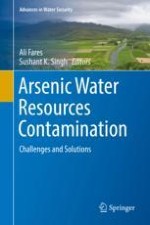2020 | OriginalPaper | Buchkapitel
6. Sustainable Arsenic Mitigation: Problems and Prospects in India
verfasst von : Nandita Singh, Om Prakash Singh
Erschienen in: Arsenic Water Resources Contamination
Aktivieren Sie unsere intelligente Suche, um passende Fachinhalte oder Patente zu finden.
Wählen Sie Textabschnitte aus um mit Künstlicher Intelligenz passenden Patente zu finden. powered by
Markieren Sie Textabschnitte, um KI-gestützt weitere passende Inhalte zu finden. powered by
